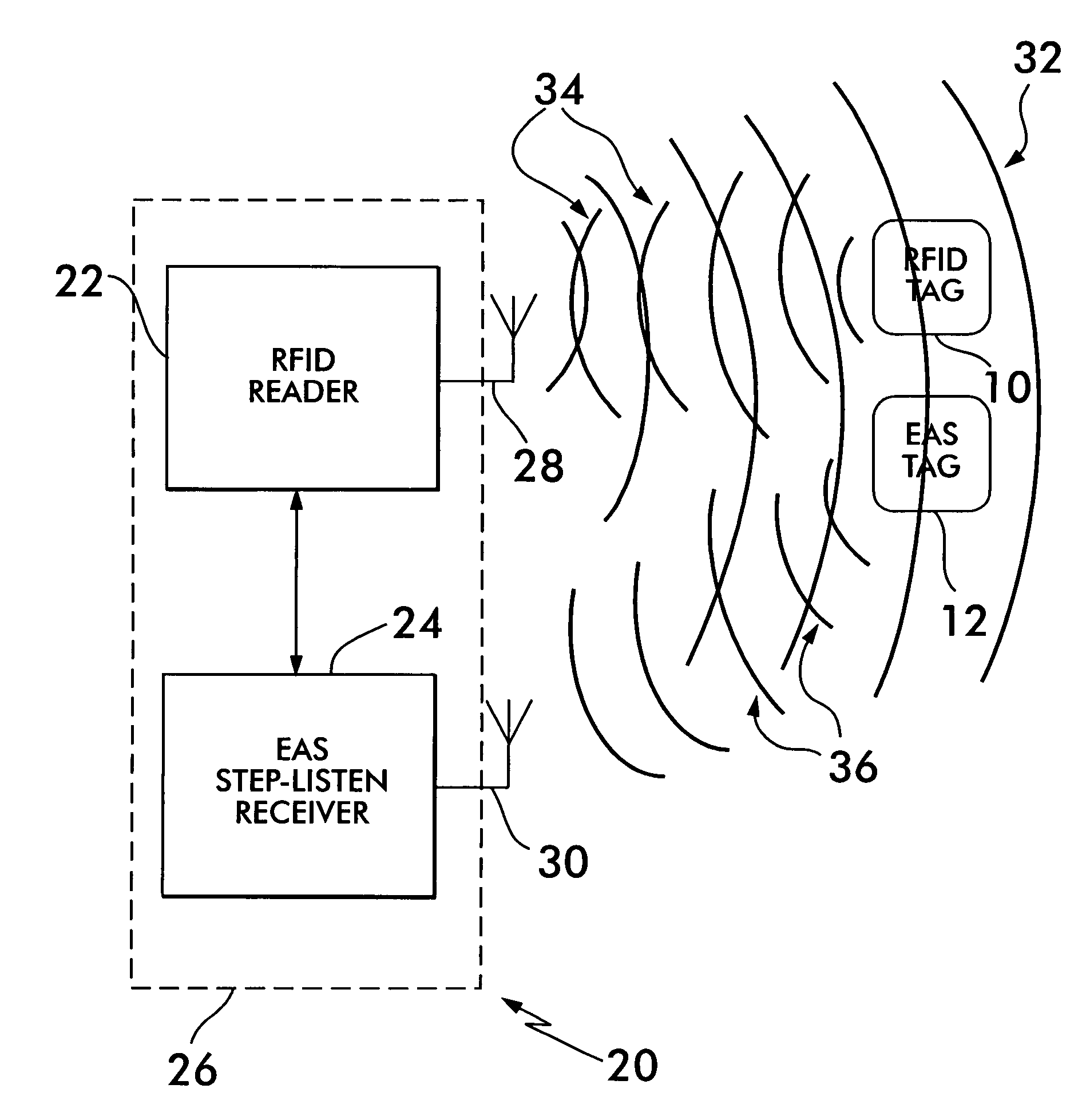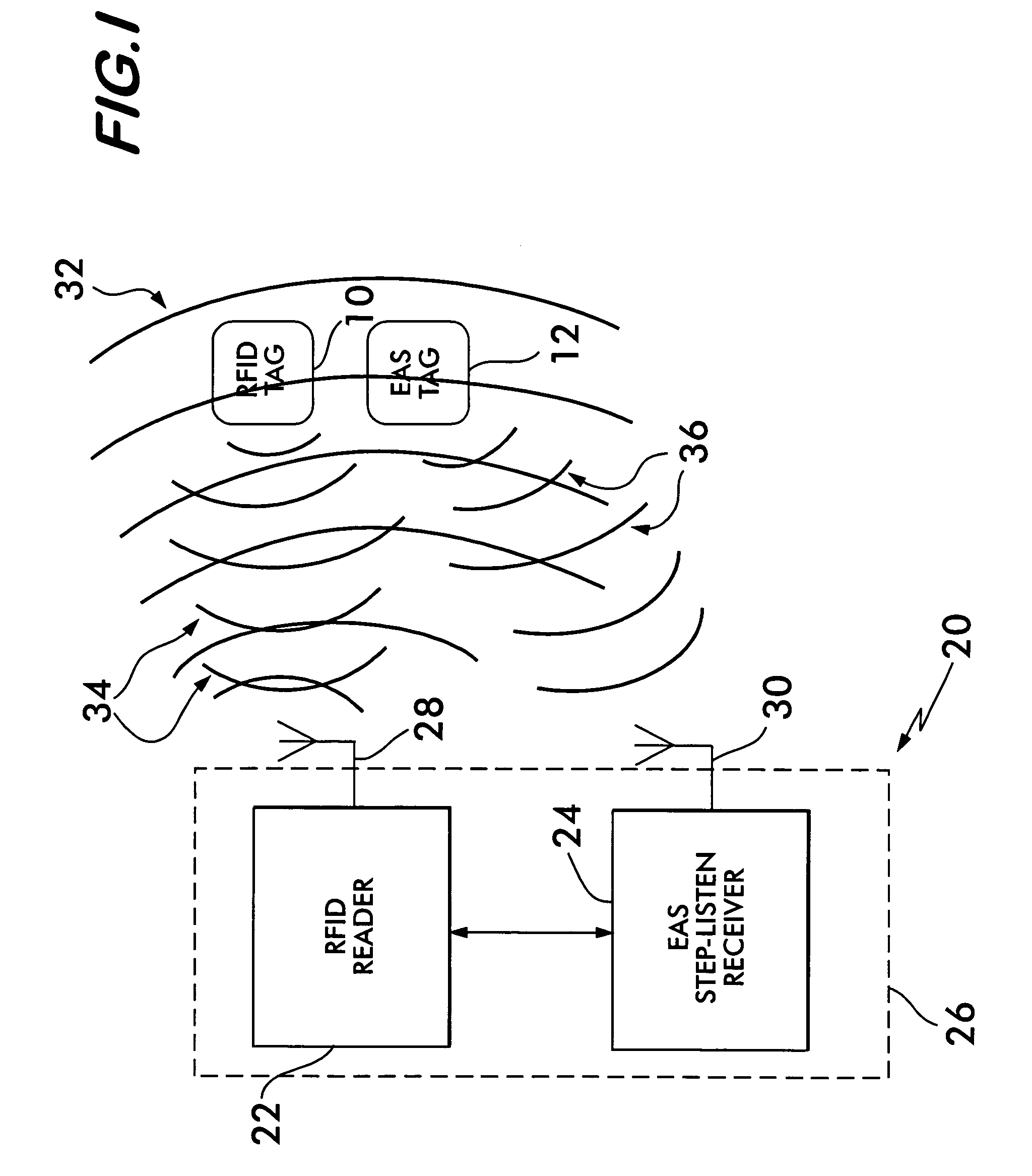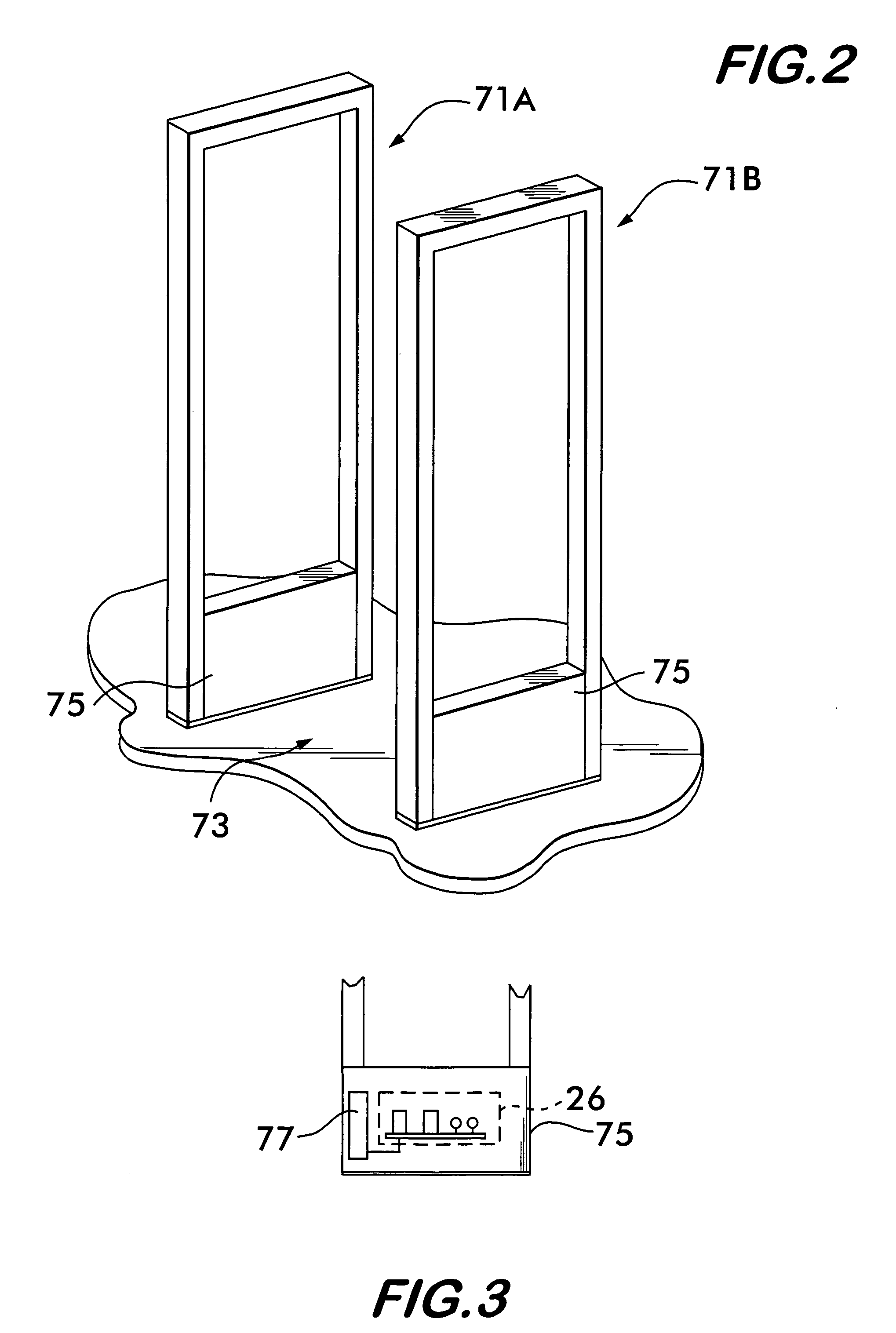System and method for detecting EAS/RFID tags using step listen
a technology of step listen and rfid tag, which is applied in the field of identification tags, can solve the problems of continuous signal emission from the reader, rfid chip, and inferior performance of either technology deployed alone, and achieve the effect of reducing the amplitude of carrier forcing function and avoiding cost and space inefficiencies in duplication circuitry
- Summary
- Abstract
- Description
- Claims
- Application Information
AI Technical Summary
Benefits of technology
Problems solved by technology
Method used
Image
Examples
Embodiment Construction
[0035]The present invention 20, as shown in FIG. 1, basically comprises an RFID reader 22 and an EAS step-listen receiver 24 that may be positioned in a single housing 26, and each having respective antennae 28 and 30. In operation, the RFID reader 22 emits the stimulus 32 (FIG. 4) which includes an RFID carrier frequency (e.g., 13.56 MHz), modulated with RTF commands. If an RFID tag 10 is present and is tuned to that RFID frequency, the RFID tag 10 emits a response 34 (FIG. 5) that is detected by the RFID reader 22. If an EAS tag 12 is also present in the vicinity and which is tuned to an EAS frequency (e.g., 8.2 MHz), the EAS tag 12 emits (FIG. 6) a natural response “ring down” signal 36 (caused by the stimulus 32) which is detected by the EAS step-listen receiver 24. It should be understood that the stimulus 32 and the “ring-down” signal 36 are nearly concurrent in time whereas the RFID response 34 occurs later in time.
[0036]FIG. 2 depicts an exemplary pair of security pedestals ...
PUM
 Login to View More
Login to View More Abstract
Description
Claims
Application Information
 Login to View More
Login to View More - R&D
- Intellectual Property
- Life Sciences
- Materials
- Tech Scout
- Unparalleled Data Quality
- Higher Quality Content
- 60% Fewer Hallucinations
Browse by: Latest US Patents, China's latest patents, Technical Efficacy Thesaurus, Application Domain, Technology Topic, Popular Technical Reports.
© 2025 PatSnap. All rights reserved.Legal|Privacy policy|Modern Slavery Act Transparency Statement|Sitemap|About US| Contact US: help@patsnap.com



